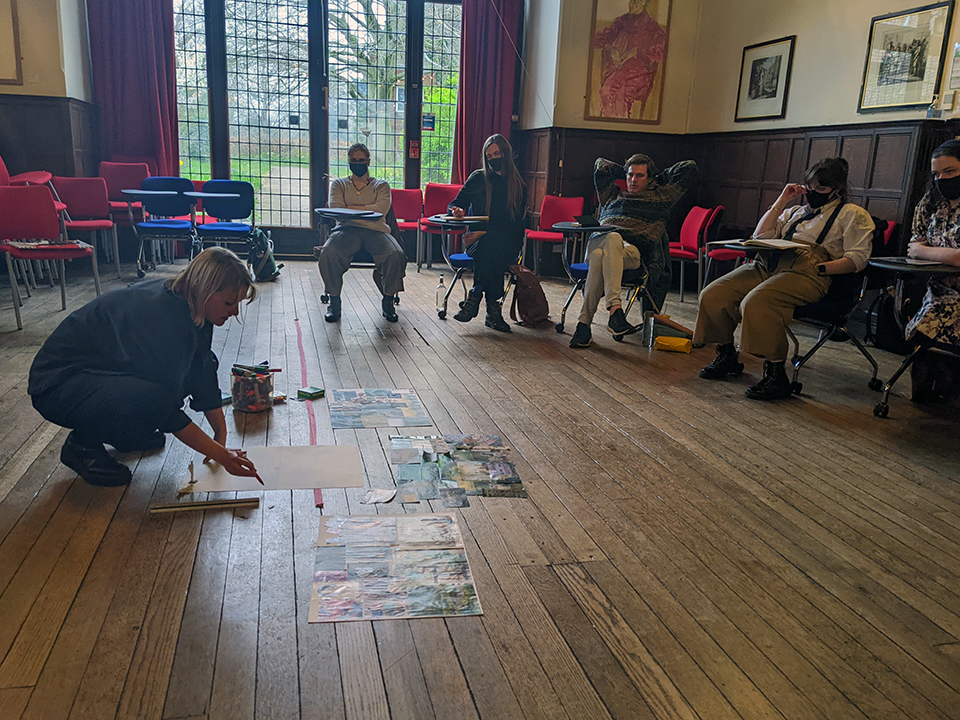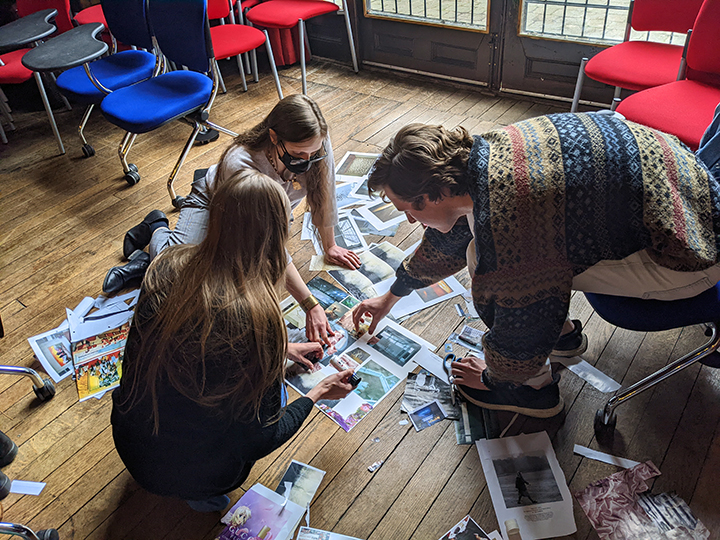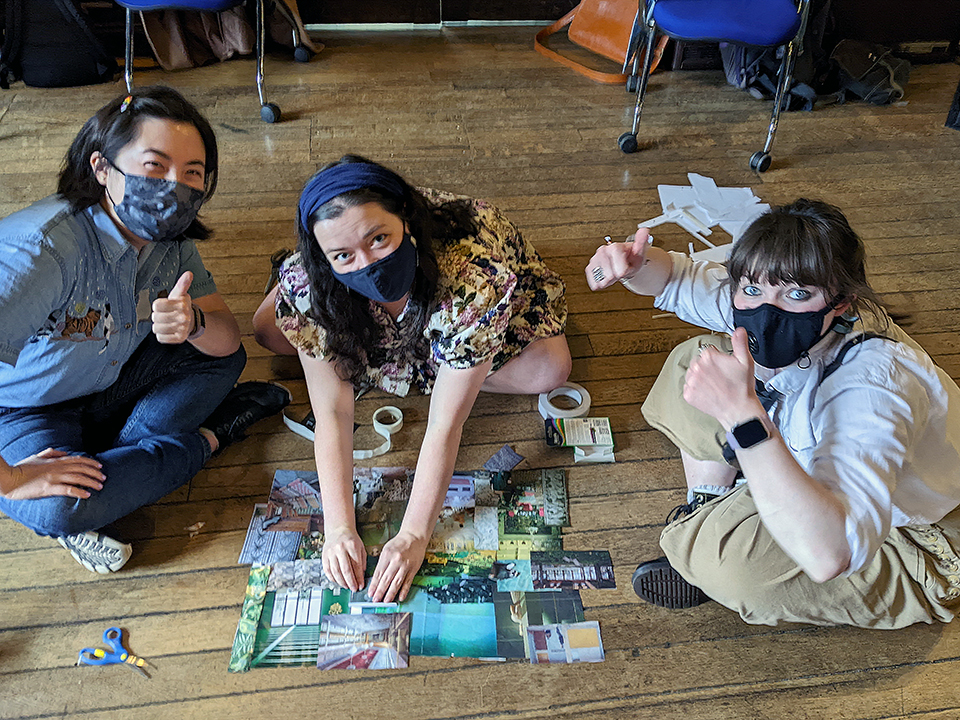As part of the MA Shakespeare and Creativity course, students have had the opportunity to take part in a series of workshops with artists from the RSC. Devon Burke tells us more about the Design Workshop and what she gained from the session.
The RSC Workshop Series
This spring’s RSC workshop series—with sessions covering writing, directing, and design—has undoubtedly been one of the most anticipated highlights of the MA Creativity cohort’s Ensemble module. As with each of the workshops we had the privilege of participating in over the course of this term, we were gifted not only an illuminating peek into the practical aspects and considerations of our guest artist’s area of expertise, but also invaluable insight into how their discipline fits into the broader workings of a prolific, high-profile company such as the RSC.
The Foundations of Design
The day began with a brief PowerPoint presentation, wherein Anisha covered some of the basic foundations of design, the challenges of juggling the concurrent responsibilities of both set and costume design (a foreign concept to the Americans in the cohort, for whom the two disciplines are generally covered by separate designers), and the broad strokes of the design process timeline on a professional production.

Afterward, we were allowed an exclusive up-close look at the white-card model of the set for the RSC’s most recent production of Much Ado About Nothing. Built to scale in miniature and populated with painted 2D cut-outs of the characters, the model made it viscerally apparent how carefully the balance between artistry and technical constraints must be managed when designing such large-scale productions, and I believe we all came away from our encounter with the model with an expanded sense of the integral place of the designer within the broader context of theatrical production.
Creating our own designs
After marvelling at the intricate model box for a while, we were challenged by Anisha to try our hand at collaboratively creating some design aesthetics of our own through mood-boarding. We broke into three small groups, and with the aid of some A2 paper, scissors, glue sticks, and an intimidatingly large pile of magazines, our inner kindergarteners came out to play—in a focused, productive way, of course. We scoured the pages for images that spoke to us and crafted our mood boards out of whatever inspiration arose.

While the resultant image collages were unique to each group and quite disparate from one another in overall tone, we were surprised by the ways in which they managed to speak to one another. Evidently, our preliminary devising work on our in-progress Ensemble production injected a shared sense of whimsy and romanticism into all three boards, and even the colour schemes—a combination of muted pinks, greens, and greys—unintentionally echoed one another.

Creating characters
Next, Anisha pulled the metaphorical rug out from under us. Naturally, we had become emotionally invested in our respective mood boards, so the next logical step was clearly to swap the boards among the groups. After mourning the loss of its own collage, each group was tasked with developing an original character from its newly inherited mood board. Despite the emotional devastation of being parted from our original creations, this was an important exercise in the inherent division that happens between creative departments in the professional theatre setting and the necessity of releasing one’s work to the collective—an effective distillation of the collaborative process in its purest form and, ultimately, my favorite exercise of the day.
Not only did we have the opportunity to stretch our storytelling muscles by creating brand-new characters (along with the settings in which we would first encounter them), but in the act of sharing our narrative creations with the rest of the cohort, were able to see first hand how our aesthetic compositions inspired our classmates to create their own characters and stories—characters and stories that both diverged from and overlapped with our initial expectations for the mood boards in thrilling and unexpected ways.
Technical drawing and storyboarding
The next portion of the day was spent delving into the concepts and tenets of technical drawings and storyboarding, and the bulk of our afternoon session was dedicated to exploring design as it pertained specifically to our ongoing Ensemble project. A generous font of wisdom, Anisha was keen to help us contextualize the work we had done earlier in the day and apply it to the process of developing our production, answering our queries and musings well into the afternoon while offering practical tips for those of us on the project’s design team.
All in all, our third and final RSC workshop of the term made for a fitting end to what has been an invaluable series of workshops and has left the MA Creativity cohort primed and ready to tackle our own production, which took place at the Birmingham Repertory Theatre in early June.
